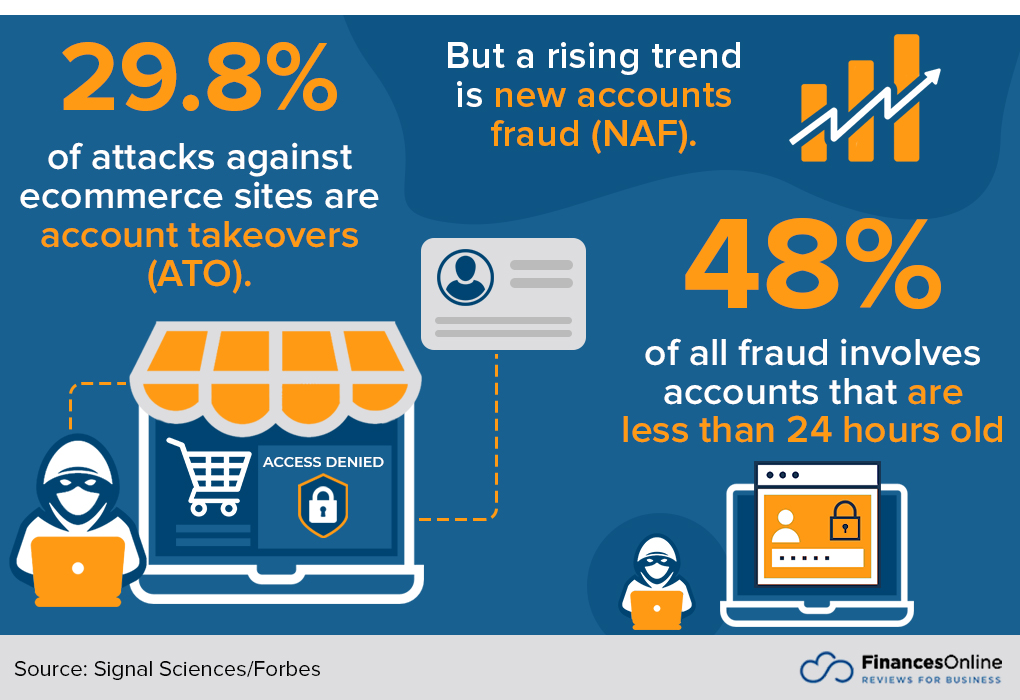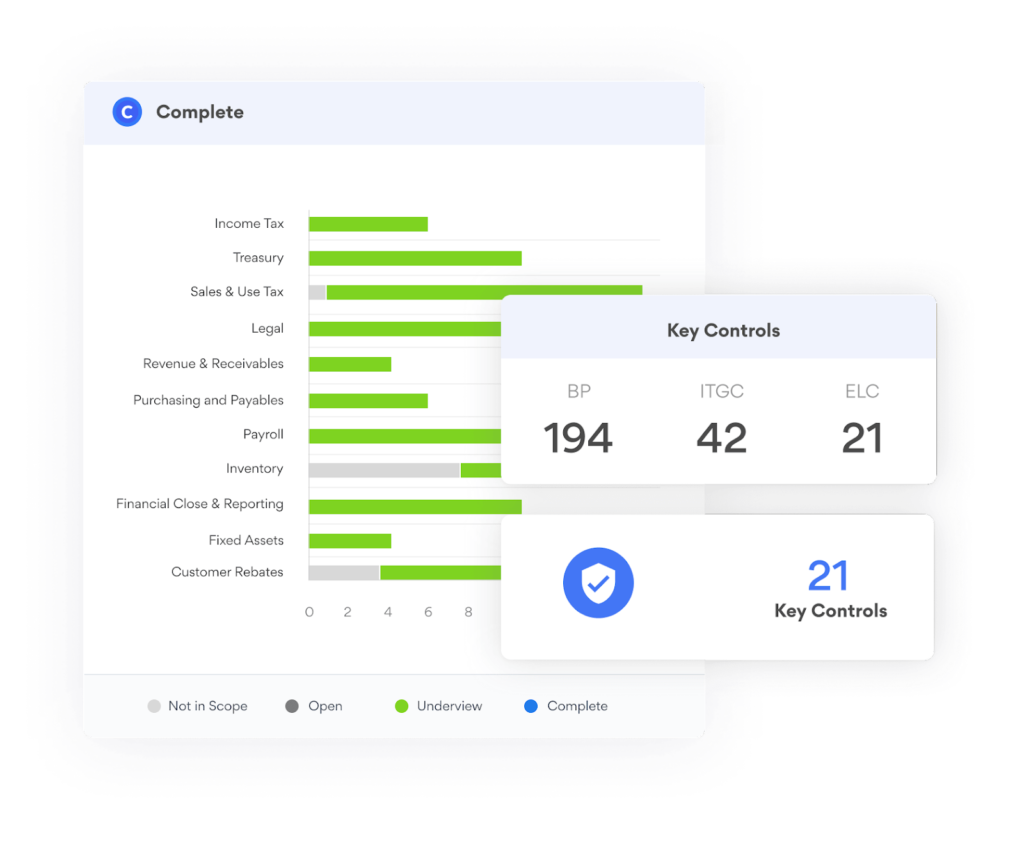When your work is based online, you’ve got to be familiar with the threats to your privacy and security that you’ll encounter — including social media security risks.
These are always changing and evolving, meaning it’s always important to stay on top of new developments and prepare yourself properly.
In this post, we run through the main threats affecting online stores in 2023, so you can understand what you’re up against and adequately protect your eCommerce brand. We will cover:
Let’s jump in.

What Are the Top Social Media Security Risks Today?
There are many eCommerce changes to expect going into 2023, so it’s vital to ensure you’re properly prepared for them.
First on that list (or very close to the top, at least) are the biggest social media security threats. The three most important social media security risks to protect yourself and your store against include:
- Fraudsters and scammers
- Data breaches
- Identity theft
Let’s dig deeper into each.
1. Fraudsters and Scammers
Online fraud has been a problem more or less since the inception of the internet. Unfortunately, that doesn’t look set to change anytime soon, which is why we’ve ranked fraudsters and scammers as the biggest social media security risk to protect yourself from in 2023.
Scammers essentially want to trick you into trusting them. Then they trick you into giving them things that belong to you, such as your personal details or your money.
We’ll discuss some common examples of fraud to give you a better idea of what you’re up against, followed by an overview of why it’s so important to protect against fraud.
Examples
New scams and fraud schemes are cropping up all the time, making it difficult to cover every single type of these you can run into. With that said, according to a study by IBM, nearly 20% of all data breaches involve stolen or compromised credentials.

[Source: FinancesOnline]
This type of fraud tends to involve attempts to get passwords or personal details out of account holders.
These schemes might rely on phishing or pharming tactics. Phishing, in particular, is prevalent in social media, and it usually takes the form of scammers sending emails pretending to be from a social media site your brand is active on.
For example, a phishing email might claim to be from TikTok, letting you know you’ve been logged out of your business account due to suspicious activity. It then prompts you to log back in via a link embedded in the email. If you do this, the scammers will steal your credentials to access your account.
Pharming, meanwhile, involves fraudsters creating fake versions of trustworthy websites. They might create a convincing Facebook page lookalike, for example, so that when you think you’re actually on your Facebook page and try to log in, the scammers can steal your information.
Why It Matters
Scammers are always learning, which means that new and more convincing scams are developed every year. Phishing emails are becoming more sophisticated; pharming websites look more and more genuine.
If you’re not careful, your business information and social media accounts can fall into the hands of the wrong people.
This puts your business at risk of financial losses — and more. Scammers that steal your money can devastate your financial quarter, but ones that steal your information can also deal a huge blow to your brand reputation.
If your brand falls victim to scammers, customers will not feel comfortable sharing personal information or payment details. They will want to avoid any potential risk to their own finances. Instead, they will take their business to one of your competitors, which has a better reputation for security.
2. Data Breaches
Even brands that successfully protect their online stores from all scam attempts may still fall victim to data breaches.
A data breach is a leak of confidential company information. The data may pertain to an eCommerce business’s internal workings, or it may come from their customers. In either case, the information was intended to be kept private and was instead accessed maliciously.
In social media terms, data breaches can arise from weaknesses in the social media platform itself. This is then misused by hackers, who steal information or take over a company’s accounts.
Examples
Data breaches may occur when hackers exploit a security fault in a company’s software or social media account.
For example, hackers might take advantage of a weak spot in your store’s firewall to access customer data. This would let them see the private details of those who have spent money at your company’s online store.
Why It Matters
Firstly, data breaches come with major repercussions that tend to have ripple effects, compounding and getting worse the longer they go unaddressed. Those include financial consequences.
According to the IBM study mentioned, on average, data breaches in 2022 cost companies $4.35 million.

[Source: Netwrix]
Costs aside, data breaches also affect customers’ capability to trust companies with their information. That means fewer sales and fewer loyal customers.
Hackers can also exploit data breaches to lock companies out of their own social media accounts. They’re then at liberty to ruin a company’s reputation and customer relationships.
3. Identity Theft
Scammers and fraudsters target your information, as well as your money. But that’s not the only thing that can be stolen from your company on the internet, especially via social media. People with malicious intent can steal your company’s very identity.
Here’s a quick rundown of how malware can be used to accomplish this.

So, what happens once they’ve assumed your identity, and why is this such a threat? We’ll answer these two questions in order.
Examples
Cybercriminals might use the strategy outlined above to steal your login credentials on a website like Instagram. They can then post defamatory content or other content that goes against your brand identity.
This changes customers’ perception of your brand.
Another example of identity theft as a serious social media security risk is on any platform that lets criminals contact your customers directly. They can send inappropriate messages to those customers, which weakens trust and has the potential to threaten customers’ safety.
Why It Matters
As awful as the consequences can be for your customer relations, that’s not the only reason why identity theft negatively affects your online store.
After all, cybercriminals can also use your credentials to alter your relationship with stockholders, investors, partners, and other key groups. This inflicts structural damage to your eCommerce business, making it harder to recuperate damages later on.
Top Tips for Protecting Your Store Against Social Media Security Risks
Of course, we’re not just going to tell you that there are terrible threats out there without showing you how you can protect yourself from them.
Social media can be a highly useful avenue for marketing, outreach, customer relationship management, and much more — criminals shouldn’t get to take that away from you.
So what are the best tips to keep your eCommerce business safe from social media security risks?
Let’s jump in!
1. Use Modern, Purpose-Built Tools
2023 is a new year full of new security threats. You have to be prepared for those, which is why you need the best identity theft protection, anti-phishing software, firewalls, and other security measures you can get your hands on.
General software that can protect against a decent number of threats just won’t cut it.
You need tools created specifically with eCommerce business safety in mind, and they need to be tailored to social media safety. That’s because the creators behind those kinds of tools know what they’re up against and make specific adjustments accordingly.
Here are some worth considering:
- Google Authenticator. This is a time-based, one-time password algorithm that tightens your security with two-factor authentication when accessing your accounts.
- Blocky. This app allows you to block incoming traffic from specific countries or IPs, helping you to protect against any dangerous traffic.
- Cozy AntiTheft. As we’ve said, some scammers will look to create a lookalike page. This app restricts access to your content, so it can’t be copied, pasted, or downloaded.
- Rewind Backups. This tool backs up all the data from your site, so, if the worst happens, you can get back up and running as fast as possible.

[Source: PCMag]
2. Automate Your Processes
Even the most attentive and alert human can slip up sometimes. That’s only natural — if you’re not a machine, you can’t catch every tiny detail every single time.
This is precisely why you need machines.
By using up-to-date security software and eCommerce automation tools, you can set AIs to the task of catching security threats before they get a chance to grow.
That means protecting yourself while freeing up time in your human employees’ schedules, ensuring they can also be more prepared to deal with security threats.
3. Make Sure You Have an Audit Trail
One of the best ways to protect your eCommerce store is by ensuring you’ve got an audit trail that’s easily accessible, searchable, and well-organized. An audit trail is a sequential record of all transactions, changes, and activities, with each record clearly timestamped.
By tracking your financial transactions, you’ll be able to stay on top of any suspicious activity in terms of the movement of your company’s money.
If someone in the company has fallen victim to a phishing scam, for example, you’ll pick up on this much faster with an accurate and up-to-date log of where your company’s money is going.
As a bonus, having an audit trail readily accessible gives you concrete proof of your company’s history. This is very useful for insurance claims, court cases, and governmental audits, among others.

[Source: AuditBoard]
4. Ensure You Have the Right Knowledge (and Experts)
You need the right information to protect yourself against cybercriminals on social media — just like you need knowledgeable experts who can help you enact your security plans.
You and your experts need incredibly specific knowledge. General cybersecurity alone isn’t enough, helpful though it might be; you need knowledge of social media safety, specifically. That’s the only way to properly defend against scams, hacks, and thefts of any kind.
Accordingly, you need to plan to conduct processes like a social media audit. These help you stay aware of any developments in your social media strategy and approach, so you can catch potential weaknesses before criminals can.

5. Stay on Top of Trends
As we’ve mentioned, the specific risks affecting social media change constantly. This makes it absolutely vital to ensure you stay on top of new developments and trends in the risks department.
Regularly checking on technology predictions for the future can really help with this. These predictions give you insight into what’s coming in the tech world, which helps you gauge what sorts of threats are likely to arise in turn.
For example, suppose tech predictions tell you that TikTok is going to get a surge in popularity. In that case, you’ll also know that it’s more likely to be targeted by cybercriminals going forward.
Final Thoughts
Despite the security risks associated with it, social media is well worth the while for eCommerce companies — provided they protect themselves properly.
Criminals tend toward fraud, scams, identity theft, and large-scale data breaches. While that list of crimes and threats isn’t exhaustive, it gives you a good idea of what to prepare for, ensuring you can weather the worst of the risks.
The final parting tip we’d like to give you is to always stay educated on threats and to educate your employees. Knowledge is power, after all, and in the fight against cybercrime, any company can use more power.

Richard Conn
Richard Conn is the Vice President of Demand Generation at AuditBoard, a leading cloud-based platform transforming audit, risk, ESG, and compliance management. Richard is an analytical & results-driven digital marketing leader with a track record of achieving major ROI improvements in fast-paced, competitive B2B environments. Check out his LinkedIn profile.
Comments
comments
Powered by Facebook Comments





